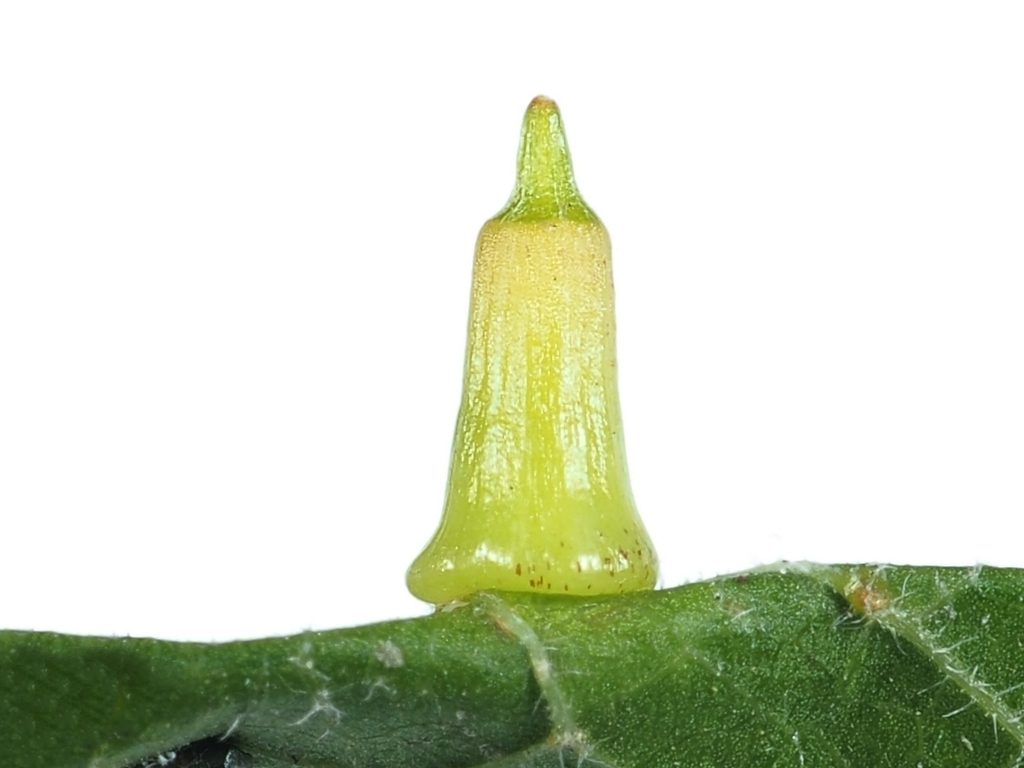Celticecis aciculata
Celticecis aciculata Gagne, new species
Hosts: Celtis laevigata, reticulata, tenuifolia
Description--Gall. On underside of leaf, rarely above, between veins, often in groups; usually cylindrical, sometimes widened at base, basal margin rounded or sharply angled, tip always abruptly narrowed a short distance before apex; glabrous, usually hairless, rarely with sparse, short, stiff hairs, green, turning tan to brown; 3.2–4.0 mm high and 2.0–2.5 mm wide at base; connection to leaf circular, flat, ca. 1/3 width of gall base, apparent on opposite side of leaf as slight discoloration, rarely as a small convexity; gall in cross section thickest surrounding base of cylindrical larval chamber, thinning gradually towards apex.
Affinities.--See under C spiniformis [C spiniformis entry: Affinities. — Nine species of Celticecis appear to form a natural group: C. spiniformis, C. aciculata, C. acuminata, C. capsularis, C. conica, C. cupiformis, C. pilosa, C. subulata, and C. supina. All form galls on the leaf lamina except for C. supina whose galls are attached to veins, usually minor ones.]
Biological notes.--Occasionally, galls are splayed outwards basally as for galls of C. spiniformis, but C. aciculata galls are always abruptly narrowed apically rather than tapered. In Alexandria, Louisiana, galls can be found in early May when they already contain clear or white second instars. By mid-June many larvae have reached the third instar. By early July some have spun cocoons and have turned from white to light yellow, at least anteriorly. The cocoons abut the base of the nipple at the end of the gall. By the end of August galls begin to dehisce but many with viable larvae remain on the leaves until leaf drop in autumn. Gastrancistrus sp. from Alexandria, Louisiana and Torymus sp. from Sycamore Canyon Wilderness, Arizona were reared in spring from galls of C. aciculata collected the previous summer.
Distribution.--A southern U.S. species found from Georgia and Florida and west to Arizona, C. aciculata was found on sugarberry, dwarf hackberry and netleaf hackberry.
AZ, AR, FL, GA, LA, MS, TX
”- Raymond J. Gagne, John C. Moser: (2013) The North American Gall Midges (Diptera: Cecidomyiidae) of Hackberries (Cannabaceae: Celtis spp.)©
Reference: https://www.biodiversitylibrary.org/page/51467028#page/20/mode/1up





